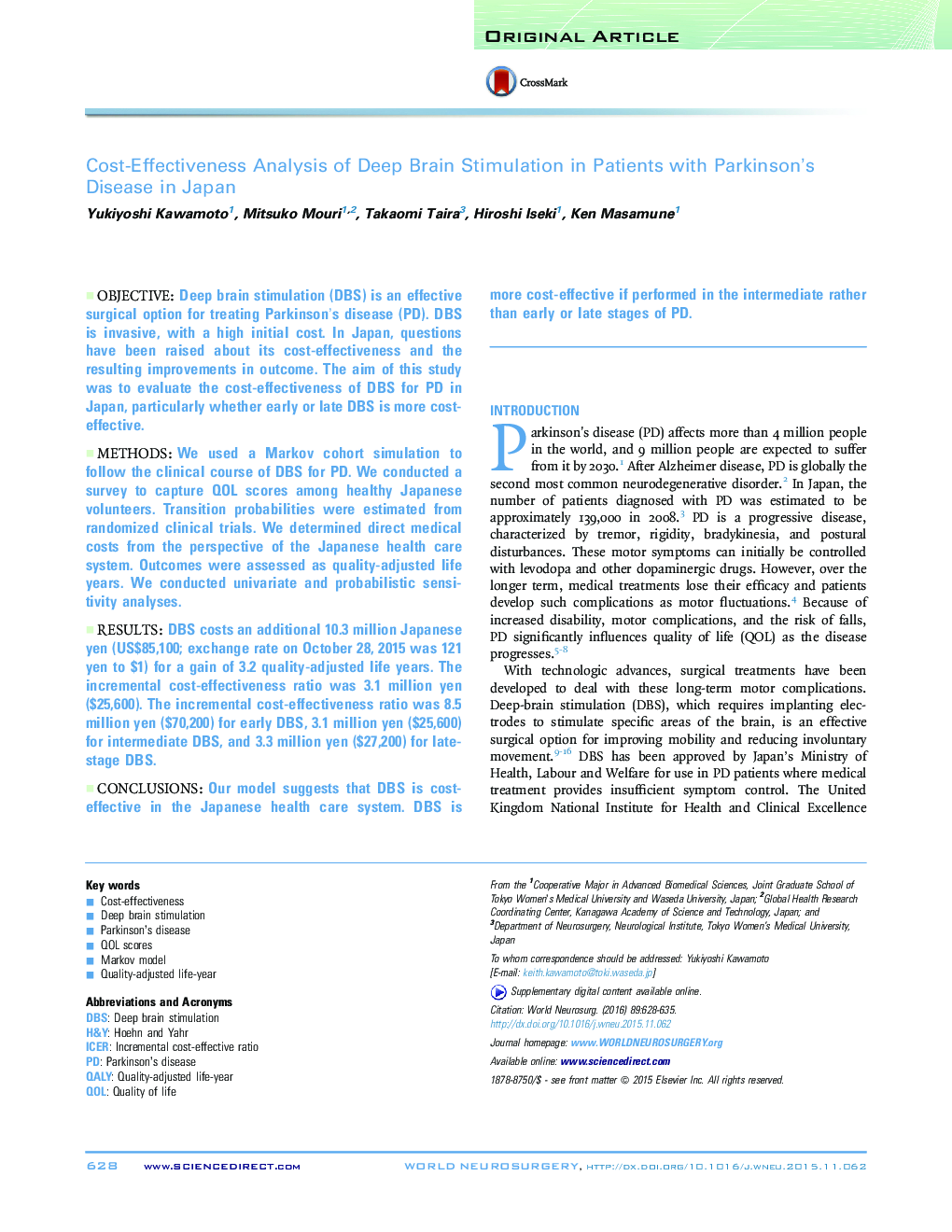| Article ID | Journal | Published Year | Pages | File Type |
|---|---|---|---|---|
| 6043849 | World Neurosurgery | 2016 | 9 Pages |
ObjectiveDeep brain stimulation (DBS) is an effective surgical option for treating Parkinsonʼs disease (PD). DBS is invasive, with a high initial cost. In Japan, questions have been raised about its cost-effectiveness and the resulting improvements in outcome. The aim of this study was to evaluate the cost-effectiveness of DBS for PD in Japan, particularly whether early or late DBS is more cost-effective.MethodsWe used a Markov cohort simulation to follow the clinical course of DBS for PD. We conducted a survey to capture QOL scores among healthy Japanese volunteers. Transition probabilities were estimated from randomized clinical trials. We determined direct medical costs from the perspective of the Japanese health care system. Outcomes were assessed as quality-adjusted life years. We conducted univariate and probabilistic sensitivity analyses.ResultsDBS costs an additional 10.3 million Japanese yen (US$85,100; exchange rate on October 28, 2015 was 121 yen to $1) for a gain of 3.2 quality-adjusted life years. The incremental cost-effectiveness ratio was 3.1 million yen ($25,600). The incremental cost-effectiveness ratio was 8.5 million yen ($70,200) for early DBS, 3.1 million yen ($25,600) for intermediate DBS, and 3.3 million yen ($27,200) for late-stage DBS.ConclusionsOur model suggests that DBS is cost-effective in the Japanese health care system. DBS is more cost-effective if performed in the intermediate rather than early or late stages of PD.
